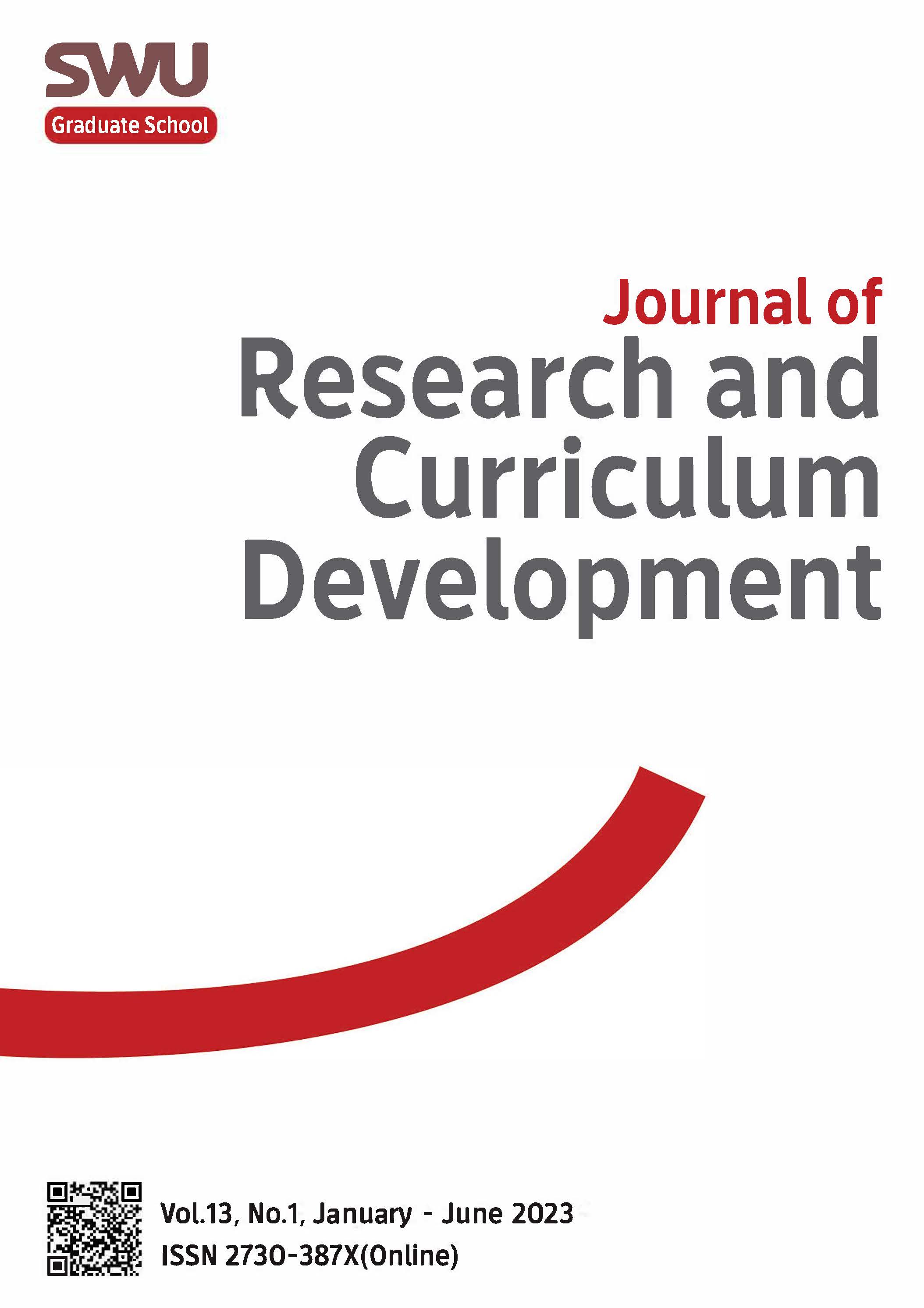The Integration of Web-Applications and Collaborative Learning in Mathematics for Grade Five Bhutanese Students
Keywords:
Web-Applications, Google Slide, Slido, Collaborative learning, Learning Achievement, Learners’ PerceptionAbstract
The purposes of this research are follows: (1) to assess the learning achievement in mathematics among Grade Five Bhutanese students using web-applications and collaborative learning; and (2) to examine the perception of Grade Five Bhutanese students towards web applications and collaborative learning in mathematics. The study was conducted in the 2022 academic year in a lower Secondary school in Bhutan. The population consisted of 31 Bhutanese students from one section of Class Five and they were selected using the cluster random sampling method. This paper presented a mixed-method study incorporating both qualitative and quantitative studies. The research instruments consisted of lesson plans, learning achievement tests (pretest and posttest) and semi- structured interviews. For the quantitative data, learning achievement tests (pretest and posttest) were used and further analyzed using a Paired Sample t-test. The analysis revealed that the mean score of the posttest (14.44) was higher than the mean score of the pretest (10.24) with a mean difference of 4.20. The significance value (p) was also revealed as .01, indicating a statistically significant rise in the posttest scores of the research participants over the pretest scores. Regarding the qualitative data, it was analyzed with semi- structured interviews and conducted on the sample group by dividing the students into six groups. The data collected from the interviews included enthusiastic and motivated responses from the students, revealing positive perception used by the researcher towards intervention in learning mathematics. Thus, all of these findings demonstrated how the integration of web-based applications and collaborative learning in mathematics improved the learning achievement and the perceptions of the students.
References
Ahmad, M.F., Hamzah, N., Hassan, A., & Rohanai, R. (2021). Learning using the google slides mobile application and its impact on attitude, motivation and achievement for industrial design subjects in the TVE. Journal of University of Shanghai for Science and Technology, 22(11), 606-613.
Al-Samarraie, H., & Saeed, N. (2018). A systematic review of cloud computing tools for collaborative learning: opportunities and challenges to the blended-learning environment. Computers & Education, 124, 77–91. https://doi.org/10.1016/j.compedu.2018.05.016
American University School of Education. (2020, June 25). How important is technology in education? benefits, challenges, and impact on students. Retrieved from https://soeonline.american.edu/blog/technology-in-education
Baleni, Z. G. (2016). The role of technology in the constructivist classroom. In EDULEARN16 proceedings (pp. 1925-1930). https://doi.org/10.21125/edulearn.2016.0138
Cheki, K. (2018). English and Mathematics textbooks for primary classes revised. Retrieved
from https://kuenselonline.com/english-and-mathematics-textbooks-for-primary-classes-revised
Department of Curriculum and Professional Development (DCPD). (2022). Mathematics curriculum framework: classes PP- XII. DCPD, ministry of education. Royal Government of Bhutan, Thimphu, Bhutan.
Dolma, P. (2016). Investigating Bhutanese mathematics teachers’ beliefs and practices in the context of curriculum Reform (Unpublished Doctoral dissertation). Queensland University of Technology, Australia.
Dorji, K., & Tshering, P. (2020). Issues and challenges of Bhutanese mathematics curriculum: a view from the exploratory study. Turkish Journal of Mathematics Education, 1(1), 1–9. Retrieved from http://tujme.org/index.php/tujme/article/view/1/1
Drukpa, P. (2015). Bhutanese student’s attitude toward mathematics: findings from a cross-sectional survey of grade six students. Attitude Towards Mathematics, 16(12), 37-52. doi: 10.13140/RG.2.2.34484.30082
Edwards, L. (2021, June 23). What is slido for education? best tips and tricks [Web log message]. Retrieved from https://www.techlearning.com/how-to/what-is-slido-for-education-best-tips-and-tricks
Holub, J. (2020, March 5). Step by step guide: using slido + Google Slides for Your Virtual Classes [Web log message]. Retrieved from https://blog.sli.do/slido-virtual-classes-guide/
Lhendup, Y. (2020). ICT in Bhutanese education. The Druk Journal, 6(1), 48-55. Retrieved from http://drukjournal.bt/wp-content/uploads/2021/06/ICT-in-Bhutanese-Education.pdf
Lin, Y-T., & Jou, M. (2013). Integrating popular web applications in classroom learning environments and its effects on teaching, student learning motivation and performance. The Turkish Online Journal of Educational Technology, 12(2), 157–165.
McLeod, S. A. (2018). Jean Piaget's Theory of Cognitive Development. Retrieved from https://www.simplypsychology.org/piaget.html
Ministry of Education, Helvatas Bhutan, & Unicef Bhutan. (2021). Education in Emergency (EiE) During COVID-19 Report. Retrieved from https://www.unicef.org/bhutan/reports/education-emergency-eie-during-covid-19-report Role of Mathematics. (n.d). International Commission on Mathematical Instructions (ICMI). Retrieved February from https://www.mathunion.org/icmi/role-mathematics-overall-curriculum
Royal Education Council. (2021). New Normal School Mathematics Curriculum Framework (PP – XII). Thimphu: Royal Education Council.
Sahin, M. D., & Ozturk, G. (2019). Mixed method research: theoretical foundations, designs and its use in educational research. International Journal of Contemporary Educational Research, 6(2), 301-310. https://doi.org/10.33200/ijcer.574002
Summer, A. (2020). A Sustainable Way of Teaching Basic Mathematics. Discourse &Communication for Sustainable Education, 11(2), 106–120. https://doi.org/10.2478/dcse-2020-0021
The Druk Gyalpo. (2021). Royal Kasho on Education. Retrieved from https://thebhutanese.bt/royal-kasho-on-education-reform/
Tsuei, M. (2012). Using Synchronous Peer Tutoring System to Promote Elementary Students’ learning in mathematics. Computers & Education, 58(4), 1171– 1182. https://doi.org/10.1016/j.compedu.2011.11.025
Downloads
Published
How to Cite
Issue
Section
License

This work is licensed under a Creative Commons Attribution-NonCommercial-NoDerivatives 4.0 International License.





